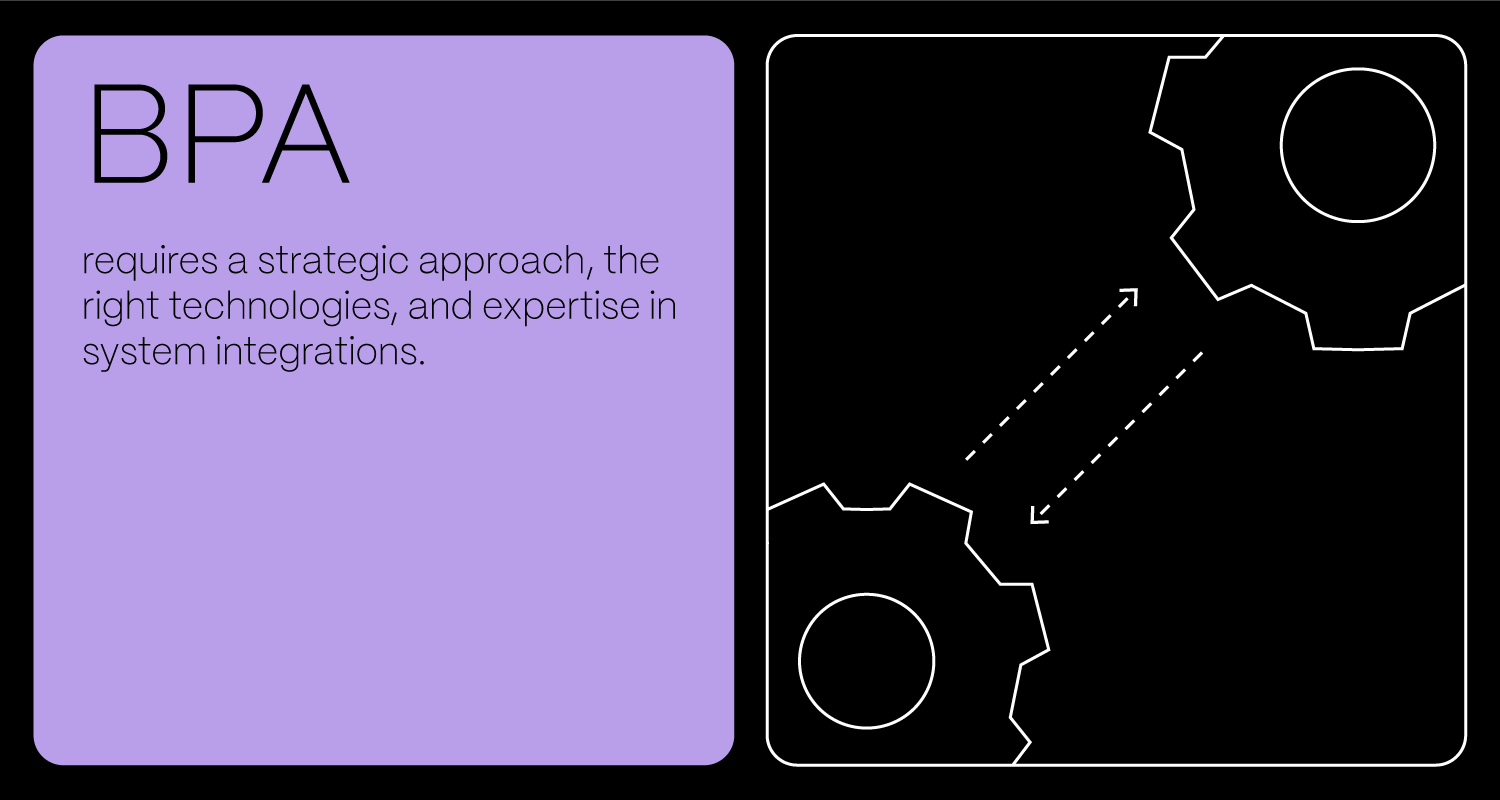Digital transformation: Automating manual tasks for efficiency and growth

Automation isn’t just a nice-to-have anymore. It’s a must. According to McKinsey, automating processes can push productivity up by 20%, helping businesses scale without piling on extra costs.
That is why more and more businesses are doubling down their investments in automating their manual processes. Researchers expect the global business process automation market value to reach $32.59 billion by the end of 2031, up from $15.81 billion in 2024.
But investing in process automation isn’t just about picking the right tools – it takes a solid strategy to make it work and drive real impact.
The hidden costs of manual processes and how automation can solve them
At first glance, manual processes might seem like a minor inconvenience – just a few extra steps here and there. But in reality, they come with significant costs that affect efficiency, accuracy, and long-term scalability.
Here are some of the biggest hidden costs of relying on manual workflows:
Operational inefficiencies
Recent studies show that office workers spend 50% of their time churning out or updating documents and 10% on manual data entry, which slows teams down and eats up valuable resources. This inefficiency builds up over time, especially in organizations with large teams focused on administrative or operational tasks.
Additionally, manual workflows can slow down decision-making. When approvals rely on emails or spreadsheets, delays are almost inevitable. A simple contract approval or invoice processing can take days, sometimes even weeks, due to bottlenecks caused by human intervention.
Automation is a direct solution to these challenges, as it takes over repetitive tasks. Take invoice processing, for example. When implemented properly, an RPA system can handle hundreds of invoices each day, far exceeding human capacity. The result? Faster operations and the ability to scale quickly.
Human error
Errors in financial reporting, payroll processing, or inventory management can result in misallocated resources, lost revenue, and even regulatory fines.
Let’s just take the example of Macy’s, a famous retail company. In 2024, the company faced a significant accounting error when an employee failed to properly record between $132 million and $154 million in expenses over three years. The mistake went unnoticed until an internal audit uncovered the discrepancy, leading the company to revise its earnings report and significantly lower its profit forecasts.
The error, which involved the misclassification of expenses, raised concerns about Macy's internal controls and resulted in a drop in stock price, damaging investor confidence. While the mistake was unintentional, it underscores the importance of robust financial reporting and internal checks to prevent costly errors that can affect a company’s financial stability and reputation.
This example also proves that manual data entry often comes hand in hand with the lack of transparency and unstructured data. When mistakes occur in such systems, they are often only discovered after they have caused a problem – sometimes days, weeks, or even months later. Fixing these errors requires additional time and effort, often involving multiple departments.
By reducing reliance on manual data entry and other repetitive, high-error-prone processes, businesses can improve overall efficiency, eliminate errors, and reduce operational risk.
Scalability challenges
As businesses expand, their processes must evolve to handle increased demand. However, manual workflows are inherently limited in their ability to scale.
For example, a company processing orders manually may struggle to keep up as order volumes increase. Without automation, the only solution is to hire more staff, which increases operational costs and introduces additional layers of complexity.
By automating repetitive and time-consuming tasks, organizations can enhance efficiency and maintain a high level of consistency across processes. This capability not only accelerates internal workflows but also facilitates the seamless expansion of business operations, whether through entering new markets, managing higher transaction volumes, or serving a growing customer base.
Compliance risks and security challenges
Industries such as finance, healthcare, and insurance operate under strict regulatory frameworks that require meticulous record-keeping, data protection, and process standardization.
Relying on manual processes in these industries increases the risk of non-compliance, which can result in severe financial penalties, legal liabilities, and reputational damage.
One of the biggest compliance challenges in manual workflows is the lack of traceability. Regulatory bodies require organizations to maintain accurate records of transactions, approvals, and operational decisions. When processes are managed manually through emails and spreadsheets, tracking and auditing these activities becomes nearly impossible. This may increase the risk of fines and sanctions.
Another significant issue is data security, and it correlates with what we’ve already discussed above – human error. Documents can be misplaced, unauthorized employees may gain access to sensitive files – there are so many vulnerabilities to consider in times when cybersecurity risks are constantly on the rise.
The common business process management and automation mistakes companies make
Many companies have attempted to improve efficiency by implementing business process management (BPM) solutions, often pairing them with robotic process automation (RPA) to handle simple tasks.
While this can be a step toward automation, it often falls short of addressing broader business goals. As a result, companies struggle to achieve the full benefits these technologies promise.
Cherry-picking
As its name suggests, cherry-picking means they focus on automating only the most critical processes. While this can improve efficiency within a single department or team, it fails to deliver a comprehensive solution across the organization.
For instance, a financial institution may streamline the loan approval process but neglect other key interactions throughout the loan lifecycle. This results in disconnected systems, siloed information, and a fragmented customer experience. Customers often find themselves lost between departments, forced to navigate an internal maze just to resolve simple queries.
Automating everything
Some companies take the opposite approach to cherry-picking, aiming to automate everything at once. This involves extensive analysis of business processes, data flows, system interactions, and customer touchpoints.
While this method prioritizes customer experience, it often leads to long development cycles, sometimes lasting months or even years. During this time, business needs change – new products emerge, compliance requirements shift, and operational strategies evolve. As a result, these large-scale projects can become outdated before they are even deployed, leading to costly delays or outright cancellations.
How companies can strategically automate processes
Business process automation requires a strategic approach, the right technologies, and expertise in integrating systems.
Identifying automation opportunities
Not every task can or should be automated. Organizations successful in process automation start by conducting process audits to assess workflows and uncover inefficiencies. These audits involve deep dives into daily operations, involving all relevant stakeholders to fully understand the pain points and business needs.
Data analytics plays a key role in this phase. By analyzing data on how processes flow, where delays occur, and how resources are allocated, we can pinpoint areas where automation will have the most significant impact.
For example, repetitive, rule-based tasks, such as data entry or invoice processing, are prime candidates for automation. These tasks are tedious for employees and offer little value to the organization when done manually.
Selecting the right automation technologies
This phase involves the evaluation of different automation technologies based on the specific needs of the business and the tasks being automated. Here are some of the key technologies we deploy:
-
Robotic process automation: For rule-based tasks that involve repetitive actions, such as data entry, invoice processing, and order management. RPA tools mimic human interactions with digital systems to automate these tasks without the need for complex coding.
-
Artificial intelligence: For tasks that require decision-making, pattern recognition, or data analysis. AI can be used for tasks like customer service automation, predictive analytics, and fraud detection.
-
Cloud-based automation: For businesses that need to scale their automation efforts, cloud-based solutions offer flexibility and accessibility. These platforms allow companies to scale up or down quickly, access data remotely, and implement automation across different departments or regions without needing significant IT infrastructure.
-
Low-code/no-code platforms: These platforms enable businesses to automate processes without needing extensive programming knowledge. Companies can leverage these tools to build automated workflows quickly and deploy them across teams, allowing non-technical users to manage the automation process.
Seamless integration with existing systems
One of the biggest challenges in implementing automation is ensuring that it integrates seamlessly with existing systems.
Introducing automation without proper integration can lead to data silos, inefficiencies, and disruptions to ongoing operations. That is why finding a technical partner with experience in system integrations is incredibly important.
Integrating your existing software with third-party systems often involves building custom APIs or middleware to allow different systems to communicate effectively.
Moreover, minimizing downtime is crucial during the automation implementation phase. This requires careful planning, testing, and communication to ensure that all stakeholders are aligned and that any issues are addressed proactively.
Continuous optimization and support
Digital transformation doesn’t end once the automation systems are in place. Ongoing optimization and support are vital to maintaining and improving automation effectiveness. After deployment, continuous performance monitoring is required, using analytics and real-time data. That way, you ensure that the automation tools are functioning as expected.
By continuously tracking KPIs such as time saved, error reduction, and cost efficiency, you identify areas for improvement and make iterative adjustments.
Additionally, if you collaborate with a tech partner, they would provide ongoing support to ensure that automation tools stay up to date with technological advancements and business needs and that they comply with all relevant industry standards and regulatory requirements.

Digital transformation – The introduction to legacy system modernisation
Legacy system modernisation isn’t a one-time event – it’s an ongoing journey that will look different for every organisation. It focuses on improving core systems gradually, with a low-risk strategy, rather than reinventing what already works. That is why laying a strong foundation for digitalisation is crucial for its future success.
Read moreWrapping up
Automation is far from a one-time fix. It's an ongoing revolution. As businesses continue to adopt new technologies and refine their processes, its role will only grow and will certainly become a key driver of innovation.
Want to invest more in automating your business? Let’s start by identifying your core processes to automate.




